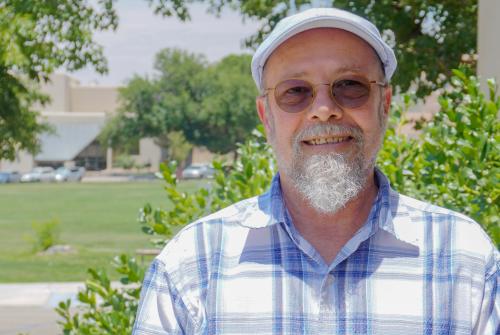Thomas Klein to lead Carlsbad Environmental Monitoring and Research Center

Thomas M. Klein was recently named director of the Carlsbad Environmental Monitoring and Research Center, administered by the New Mexico State University College of Engineering. Klein will lead collaboration among Los Alamos National Laboratory, the College of Engineering, the Nuclear Waste Partnership and Sandia National Laboratories in this internationally-recognized research facility.
“We are very pleased to have Tom on board and directing CEMRC. There are new and exciting opportunities for environmental monitoring in New Mexico. We look forward a new period of growth at CEMRC under Tom’s leadership,” said Phillip De Leon, associate dean of research for the College of Engineering.
Klein replaces Russell Hardy, who served as CEMRC director since 2000 and retired after a 31-year career at NMSU.
CEMRC is a 26,000-square-foot facility that conducts environmental and human health monitoring for the U.S. Department of Energy’s Waste Isolation Pilot Plant—the nation’s only deep geologic repository for defense-related transuranic nuclear waste. CEMRC also provides analytical assistance and laboratory space for Sandia National Laboratories, Los Alamos National Laboratory and WIPP Labs. The WIPP facility is located some 40 miles outside of Carlsbad.
“CEMRC is a member of the family of companies and groups that are helping to solve the national problem of safe disposal of nuclear waste. By performing independent monitoring and analysis, CEMRC has helped to confirm that the Waste Isolation Pilot Plant is scientifically sound while providing a degree of transparency that countries across the globe are using as a template for their own repositories,” said Klein. “CEMRC is the standard for independent environmental monitoring.”
Klein brings 31 years of experience in nuclear waste disposal, environmental remediation, industrial health and safety and has worked in regulatory compliance for national, state and local governments. Since 2002, he has worked in various capacities in relation to WIPP. His most recent position was as a member of the recertification team to obtain U.S. Environmental Protection Agency five-year recertification for WIPP.
Klein’s familiarity with CEMRC has enabled him to develop a vision for the facility’s future.
“With NMSU’s support, CEMRC has the potential to provide the same level of independent monitoring and analysis to other areas of environmental concern, such as monitoring in the Delaware Basin, spent nuclear fuel storage facilities, renewable energy, groundwater monitoring and many more areas. CEMRC is poised perfectly to expand—not only in the nuclear chemistry arena— but also in the area of monitoring and analysis for the oil and gas industry,” said Klein.
Such growth would require an expansion of the current facilities. Klein has begun exploring funding possibilities and reorganization to build a new laboratory wing. This expansion would also provide opportunities for student employment at all degree levels in both hard and soft sciences.
“CEMRC is an excellent place for graduating students to kick off their career,” said Klein. “Nowhere else can you begin your scientific career by working at a laboratory analyzing samples from the world’s only active nuclear-waste repository.”


